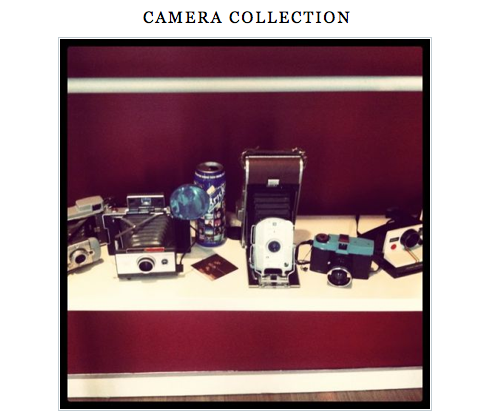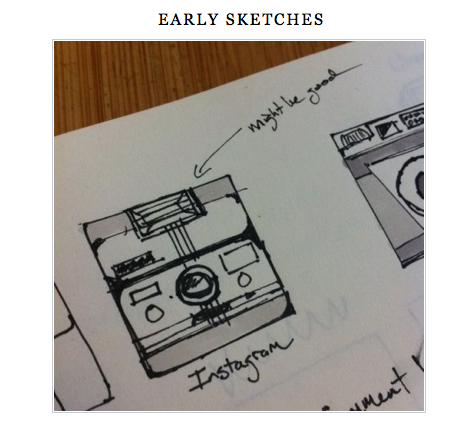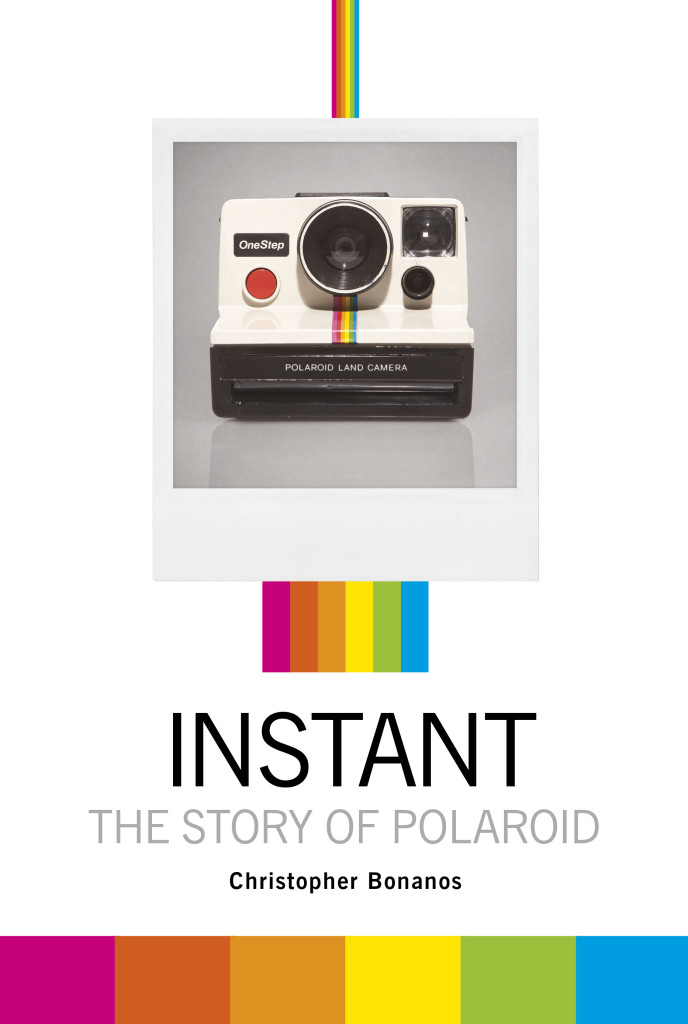Cindy Sherman is the photography world’s talking point of the moment, owing mostly to the current MoMA retrospective of her unique and astonishing work. As far as I know she’s never been much of a Polaroid fancier herself, but a few days ago, she posed for a great instant portrait, shot by Chuck Close on the 20×24. (According to the 20×24 folks, he last shot her in 1987.) Apparently he’s looking to use this image as source material for a seven-by-nine-foot painting, which is an idea I love: the woman who transforms (and often uglifies) herself before the camera, photographed by a camera known for its relentless fidelity, then rendered by Close in a form that’s not a photograph but gives the sense of one. Transubstantiation times three.
Images from the shoot here. (And, by the way, if you’re a Facebook person, please click “Like” on the 20×24 page. You’ll get lots of Pola-goodness in your News Feed if you do.)
 The book’s page is up on Amazon.
The book’s page is up on Amazon. No cover yet, No synopsis yet; the page is rudimentary, and will be fleshed out later. But it has an ISBN, and the page appears to have a preorder button, which means Someone Can Theoretically Buy It.
Buy-it-here link will be added to Polaroidland in the next few weeks, and I’ll be setting up an arrangement where, if you buy it through this site, you get your book signed. Details to be posted shortly.
 No, really. Photo is Time Inc. property, so fair-use law means I have to keep it tiny here, but click here to see it in all its glory. It’s from a slideshow of 1965 photographs by Bill Ray, whose work you’ll see in my book as well.
No, really. Photo is Time Inc. property, so fair-use law means I have to keep it tiny here, but click here to see it in all its glory. It’s from a slideshow of 1965 photographs by Bill Ray, whose work you’ll see in my book as well.
Just ran across this tour, on the Atlantic’s tech blog, of Instagram’s small office in San Francisco. (Instagram, for the holdouts among you, is a smartphone app that lets you share photos, and also treat them with digital filters so they look somewhat like analog snapshots.) This company’s sharing-and-socializing approach to photography is often compared to Polaroid’s. How explicitly the company’s founders understand that, however, I did not know till now. From the tour:
Yet another Polaroid song, this one by Ted Leo, the brainy postpunk rocker who came to prominence with his band Ted Leo and the Pharmacists. My friend Sara has been telling me for years that I need to listen to him, and it just so happens that he has a song that syncs up with my obsession d’année. She’s right: It’s my kind of record, even without the Pola-connection.
One-photo-per-day projects were popular in Polaroid’s heyday, notably the one conducted by Jamie Livingston. What’s interesting here is that he doesn’t offer the usual mix of winsome whimsy that usually pervades songs about Polaroid. Instead, Leo’s attitude is barbed. The desire to make an instant picture every day is twinned with the idea of being controlling, of wanting to shape reality. That’s interesting (although god knows what it says about me), and I like it.
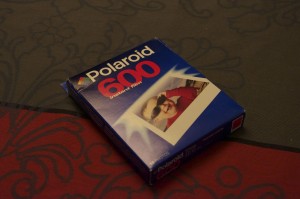 We have here an ordinary pack of 600 film, expired October 1998. Probably dried up, with a dead battery too; unlikely to produce photos (though I’ll try it).
We have here an ordinary pack of 600 film, expired October 1998. Probably dried up, with a dead battery too; unlikely to produce photos (though I’ll try it).
But it’s the back of the box that’s interesting. It displays an advertisement for a product known as the Polaroid PhotoPad, a little digital scanner dedicated to turning Polaroid instant photos into digital files.
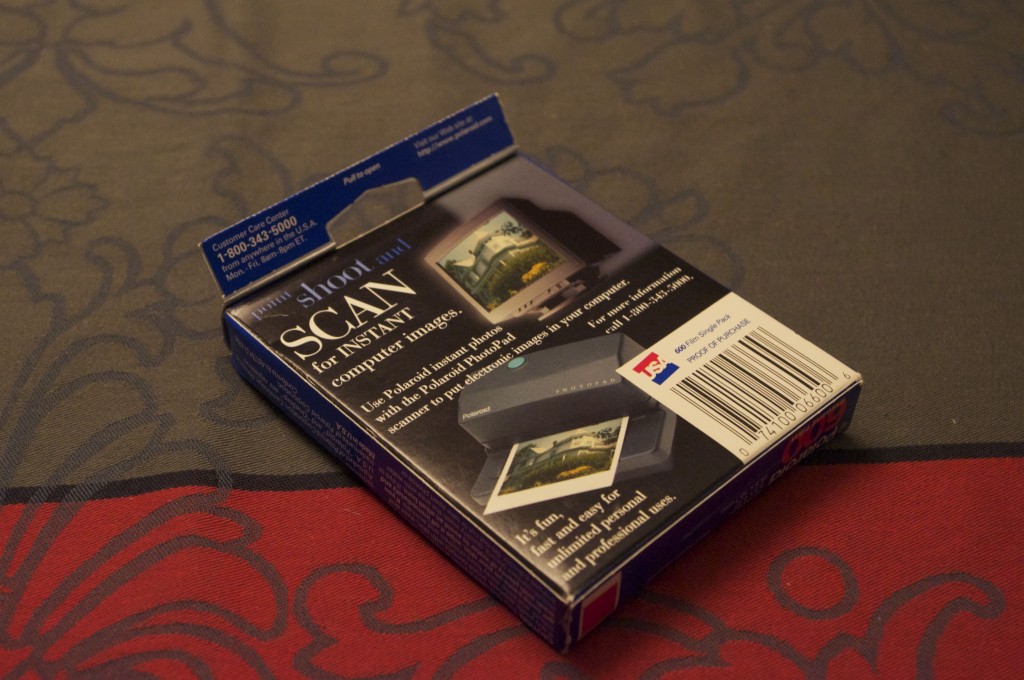 Can you just smell the awkwardness and desperation? You can hear it even in the tone-deaf ad copy: It suggests that you “use Polaroid instant photos … to put electronic images into your computer.” Via the Internets, I guess.
Can you just smell the awkwardness and desperation? You can hear it even in the tone-deaf ad copy: It suggests that you “use Polaroid instant photos … to put electronic images into your computer.” Via the Internets, I guess.
By 1998, AOL was roaring, eBay was rising, and when I went on a business trip I saw a colleague use a digital camera to take snapshots for the first time. (He e-mailed them to me from Australia after we each got home, and that’s the story, right there.) At the time, Polaroid’s stated attitude toward digital photography was “all roads lead to a print.” It was a reasonable assumption—and turned out to be utterly wrong. Within a few years, smartphones would completely replace the plastic accordion in your wallet. Today’s casual photographers store 10,000 photos on their computers, and carry a few hundred on their phones, and store everything in the cloud. Parents print out maybe three, for the bulletin board at work and for the grandparents. And Polaroid, regrettably, didn’t make that phone—though it’s finally trying.
I don’t know how many PhotoPads were sold, but I’ll tell you this: Listed on eBay right now, there are about 8,300 Polaroid cameras, and exactly one Polaroid PhotoPad.
LEGALITIES
This site is not connected with or endorsed by Polaroid or PLR IP Holdings, owners of the Polaroid trademark.ON TWITTER
My TweetsBlogroll
- 'Insisting on the Impossible'
- Everything Reminds Me of You
- Flickr's Polaroid group
- Instant Options
- LandCameras.com
- Paul Giambarba: Analog Photography At Its Best
- Paul Giambarba: The Branding of Polaroid
- Polaroid
- Polaroid SF
- Rare Medium
- The Impossible Project
- The Land List
- The New55 Project
- Vintage Instant


